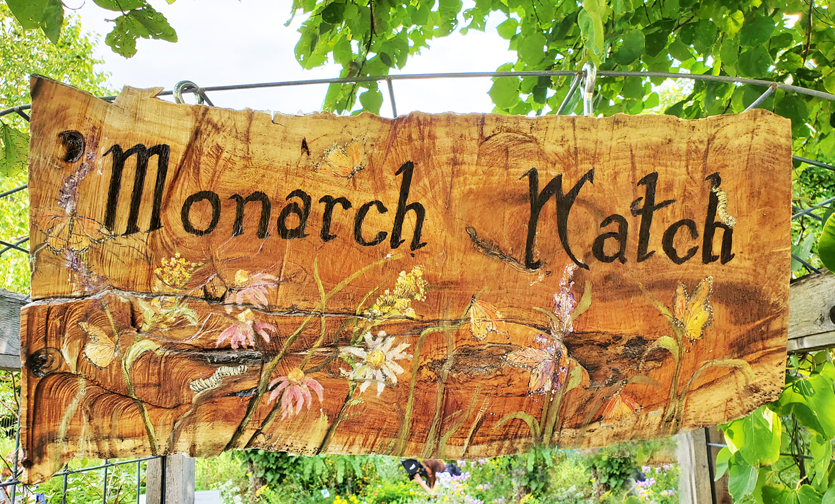
18 Sep MONARCH WATCH 30TH ANNIVERSARY EVENT TAKE-AWAY
TAKE-AWAY FROM THE MONARCH WATCH 30th ANNIVERSARY EVENTS
September 15 – 18, 2023 in Lawrence, Kansas
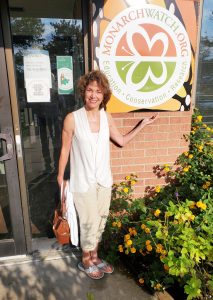 As the Conservation Specialist for Monarch Watch in southern California, I went to the 30th Anniversary Event to meet and network with an amazing array of passionate monarch butterfly Conservation Specialists from across the country PLUS monarch butterfly research scientists, most with Ph.D.’s, from around the country, AND express gratitude and appreciation for all Dr. Chip Taylor has accomplished as founder and director of Monarch Watch.
As the Conservation Specialist for Monarch Watch in southern California, I went to the 30th Anniversary Event to meet and network with an amazing array of passionate monarch butterfly Conservation Specialists from across the country PLUS monarch butterfly research scientists, most with Ph.D.’s, from around the country, AND express gratitude and appreciation for all Dr. Chip Taylor has accomplished as founder and director of Monarch Watch.
We celebrated; and we were educated! On Friday, a six-hour Monarch Symposium was held at the University of Kansas 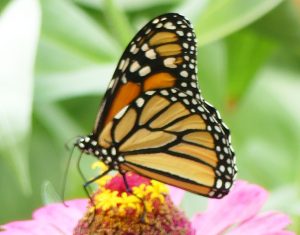 (KU) during which new research results were reported every 15 minutes, live and via Zoom, by top world-renown monarch scientists from across the United States.
(KU) during which new research results were reported every 15 minutes, live and via Zoom, by top world-renown monarch scientists from across the United States.
Here’s my take-away
#1: ALL HANDS-ON DECK! Wendy Caldwell, Executive Director of Monarch Joint Venture, stated it loud and clear. It was reiterated by many of the leaders in monarch conservation and scientists. She stated,
“It is only through coordination and collaboration that we can engage All Hands-On Deck to protect the monarch butterfly migration.” In other words, to save the miraculous monarch migrations of both eastern
and western monarchs, the contribution of citizen scientists – urban gardeners like myself – putting milkweed and nectar plants in our gardens is a key component. Engaging Big AG (agriculture, farming) in planting acreage of native pollinator habitat for both monarchs and bees, is critical. To get mayors of cities across the US to take the National Wildlife Foundation “Monarch Pledge” and promote and plant habitat in open lots, city parks, city buildings et.al. is invaluable. Habitat in golf courses, down medians of highways, corporate building landscapes, etc. are all highly encouraged.
#2: PLANT MORE HABITAT CLOSER TOGETHER TO HELP MONARCHS REPRODUCE MORE!
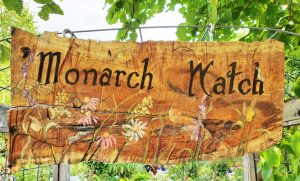
As Kelsey Fisher, Postdoctoral Research Associate at Iowa State University shared, we need habitat that makes it EASIER for monarchs to find milkweed, via visual or olfactory cues, so the males can find the females and the females can lay more eggs and reproduce the most possible monarchs as opposed to monarchs having to fly far and wide, using up valuable time (monarch butterflies only live 3 to 6 weeks!) and energy, searching for milkweed. Karen Oberhauser, Arboretum Director at University of Wisconsin-Madison, agreed saying “high milkweed density and floral richness and abundance should be conservation goals.”
WHAT DOES THAT MEAN TO THE URBAN GARDENER HERE IN SOUTHERN CALIFORNIA? Not only plant your own garden with milkweed and nectar plants but also encourage your neighbors and your neighbor’s neighbors. That will make it much easier for monarchs to find the resources they need faster and reproduce more!
#3: MONARCHS ARE RESILIENT!
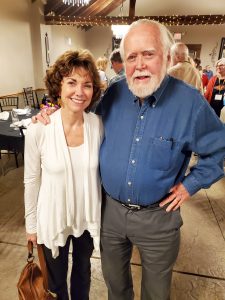 Dr. Chip Taylor, Founder and Director of Monarch Watch for 30 years, repeatedly encouraged everyone that monarchs have survived across hundreds of thousands of years including many severe climatic conditions. Can they survive the massive impact humans are having through global warming, pollinator habitat loss, and excessive pesticide use? Most likely the species will continue – HOWEVER, will it be in numbers such that we will see and enjoy them as in the past? Not unless ALL HANDS-ON DECK help comes from humans as well. Will the miraculous 2,500-mile migration of the eastern monarch continue? That depends upon essential planting of millions of acres of pollinator habitat across their migration route (northern Midwest down thru Texas, New England down the coast thru the gulf) to and from Michoacan, Mexico where they overwinter for 7 months. Will the Western Monarch migration to central coast California continue? If the temperature in late September and October each year is particularly hot, Dr. David James, Associate Professor at Washington State University, posited that monarchs may choose to remain resident in northern and southern California, continue breeding, and not migrate as they did in the winter of 2020.
Dr. Chip Taylor, Founder and Director of Monarch Watch for 30 years, repeatedly encouraged everyone that monarchs have survived across hundreds of thousands of years including many severe climatic conditions. Can they survive the massive impact humans are having through global warming, pollinator habitat loss, and excessive pesticide use? Most likely the species will continue – HOWEVER, will it be in numbers such that we will see and enjoy them as in the past? Not unless ALL HANDS-ON DECK help comes from humans as well. Will the miraculous 2,500-mile migration of the eastern monarch continue? That depends upon essential planting of millions of acres of pollinator habitat across their migration route (northern Midwest down thru Texas, New England down the coast thru the gulf) to and from Michoacan, Mexico where they overwinter for 7 months. Will the Western Monarch migration to central coast California continue? If the temperature in late September and October each year is particularly hot, Dr. David James, Associate Professor at Washington State University, posited that monarchs may choose to remain resident in northern and southern California, continue breeding, and not migrate as they did in the winter of 2020.
All in all, there is an amazing amount of invaluable research going on to help guide us in the best possible habitat to be planted, best practices on prairies and in our home gardens as we all step up to save our monarchs!
